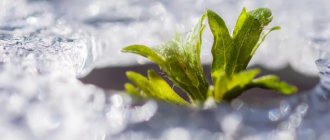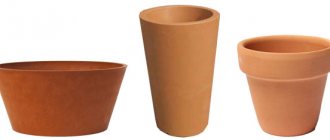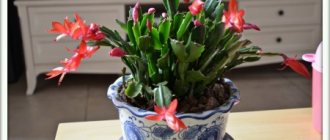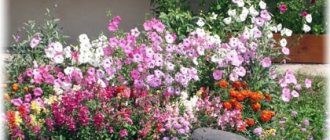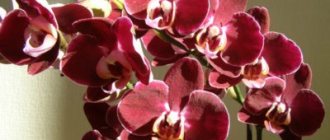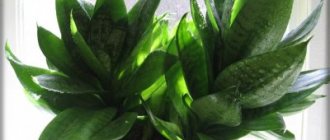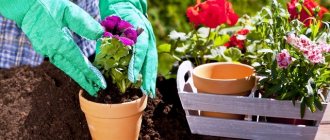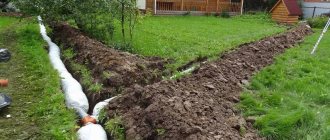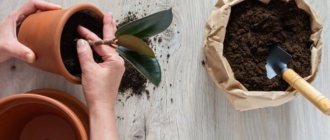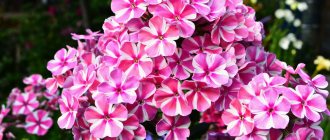In spring, some perennial garden flowers require replanting. Why and how should this be done?
There are several reasons why perennials should be replanted.
1. For any plant, even the most unpretentious one, replanting is stressful. It takes time to take root, grow the root system and prepare for winter. Spring transplantation gives the plant 5-6 months to adapt, and this is more than enough.
2. For perennials that bloom in summer and fall, this is the only time when they will suffer the least damage.
3. Thanks to spring replanting, plants are rejuvenated and additional planting material is obtained.
When to replant decorative poppy.
Perennial poppy is considered an ornamental flower for landscaping a garden or summer cottage, since its flowering period is not as long as that of the wild one. Each season, poppy flowering lasts no more than one month, after which the inflorescences completely fall off within three to five days, exposing the stems. After this stage, the perennial poppy must be replanted in order to preserve the vegetative functions of the plant.
Replanting perennial poppy
Transplantation of perennial poppy is carried out based on plant varieties. It is worth highlighting the following:
- dissected-petalled poppy.
- bract poppy.
- holostem poppy.
The dissected-petalled poppy variety is an early variety. Its distinctive feature is the presence of double inflorescences. Color may vary.
The bract-bearing variety of poppy does not bloom for long - a month, but stands out for such features as height (up to 70 centimeters) and color of inflorescences (bright red).
Holostem poppy is a variety of long-blooming ornamental poppy. Its color can vary from yellow to bright orange or deep red.
How to choose a place to transplant perennial poppy?
In order to replant a perennial poppy, you need to wait until the end of its flowering, that is, when the inflorescences have completely fallen off (this can be determined based on the description of the varieties given above), after which you can safely move the plant to a new planting site.
How to perform a transplant? Transplantation can be combined with propagation of perennial poppy. To do this, the plant must be divided into several parts, obtaining individual seedlings. After they take root at home, you can carry out a full transplant of perennial poppy.
In open ground, it is advisable to use plastic film to cover the crops for the first two weeks. It will not only accelerate their development, creating a greenhouse effect, but will also protect them from possible temperature changes and changes in weather conditions.
Transplanting adult perennial poppies into open ground
Perennial poppies do not take root well in adulthood. The transplant must be carried out as accurately as possible to avoid consequences after the process is completed. How to properly replant perennial poppies? It is necessary to dig up a bush of perennial poppies and remove it from the soil along with a lump of earth. Drainage components and fertilizers are introduced into a pre-prepared hole at the new planting site, which are covered with a layer of soil from the site. Perennial adult poppies are transplanted into this hole.
In the future, the gardener needs to install a drip irrigation system, or adjust the moisture regime, set up a fertilizing system so that the transplanted perennial poppies do not start to get sick due to stress. After several weeks of carefully caring for these beautiful plants, you can return to the usual rhythm - fertilizing and watering - so as not to oversaturate or over-water the newly transplanted perennial poppies.
Application in landscape design
Light varieties of poppies look unique, ghostly and mystical; white ones would be appropriate in “moon gardens.”
They go well with flowers of lilac shades, such as irises.
Poppies and miniature irises.
The plant is almost universal, its only serious drawback is the short flowering period and the fragility of the flowers. The latter does not prevent the plant from being popular for cutting - the bright appearance of the oriental poppy outweighs this drawback. In addition to bouquets, it will be good:
- In the flowerbeds.
- In group and single plantings.
- On discounts.
- Mixborders.
- And even in rocky gardens.
Second plan of the border.
Considering the characteristics of poppy, that is, the loss of decorativeness after flowering (the leaves begin to turn yellow), the best place to plant poppy is a skillful combination with other plants that will hide fading bushes or empty space after pruning. These can be any late-flowering perennials:
- asters,
- chrysanthemums,
- cereals,
- daylilies,
- geranium,
- bloodroot.
And also poppy looks great with summer flowers:
- cosmea,
- decorative tobacco,
- kochia.
Poppy can often be seen on the eastern or western side of houses, that is, in partial shade. It really is one of those rare plants that can add bright colors to a slightly shaded area.
Decorative terry poppy. Perennial poppy: description, planting and care
Growing poppies, planting poppies, growing conditions, photos, care in open ground, garden poppies and decorative poppies - read this and much more further in this article!
Description and characteristics of the plant
Poppy is a well-known herbal and, unfortunately, much of its fame is due to its intoxicating, narcotic properties. Although, in addition to this, it has both medicinal and aesthetic properties. It belongs to the Poppy family, which has more than a hundred species. These are mostly unpretentious survivalists who prefer to live in arid deserts, steppes or in rocks on mountain slopes.
The birthplace of the flower is considered to be Australia, Asia, Southern and Northern Europe. But, since it is unpretentious and is able to survive in a wide variety of climates, it is industrially grown for the preparation of sleeping pills in Afghanistan, India, China, Asia Minor and Central Asia.
Gardeners prefer to grow ornamental poppy varieties for their simplicity and bright, colorful blooms.
Types and varieties
Through the forces of nature and breeders, many species and hybrids of poppy have been found and bred. Some types have exclusively decorative use, while others are widely used in pharmaceuticals.
Opium
The variety that is most widespread due to its analgesic and hypnotic properties. Who has not heard about the opiates contained in this form, which makes it, on the one hand, terrible and very dangerous, but on the other hand, quite a few people have been saved from painful shock thanks to drugs based on it.
Samoseyka
Originally from the Mediterranean, Asia Minor, central Russia, Western and Central Europe. The height of the shoots varies from 30 to 60 cm. The diameter of the inflorescences reaches 7 cm, and the inflorescences themselves are white, pink, and salmon.
The variety has been cultivated since 1569.
Holostalked
Holostem or saffron poppy is a perennial, but in our country it is grown mainly as an annual plant. Central Asia, Mongolia, Altai and Eastern Siberia are considered to be the birthplace of saffron.
The stems are stunted and reach a height of only 30 cm. At the root, the stem is covered with bare or hairy leaves of light gray and pale green colors. But the buds are quite large and open up to 50 cm in diameter. Colors: white, yellow, orange
Eastern perennial
The perennial oriental poppy is one of the largest representatives of the family. The species is distinguished by a stem up to 1 m in height and huge flowers about 20 cm in diameter.
Growing poppies from seeds
Planting poppy seeds. Annual varieties are one of the few that are better to sow immediately in the open air and spend weeks growing special seedlings from seeds. Seedlings do not tolerate transplantation well and most likely may not survive it. Then, as the seeds, they have high germination rates in open ground.
Perennial poppy varieties tolerate replanting much better and are suitable for propagation by preparing seedlings. The seedlings are planted immediately into open ground, when the seedlings become stronger and produce several full leaves.
When to sow poppies
If you have not yet dealt with poppy cultivation, then get ready to learn what is probably a new term for you - stratification. Stratification in botany is keeping seeds at a certain temperature to speed up their germination. In other words, the seeds need to undergo an artificial wintering. To do this, before planting, they are placed in the refrigerator (not in the freezer) for 8 months. This 100% needs to be done with hand-picked seeds. Purchased seeds most often do not need stratification - look for details on the label.
Landing
All varieties, without exception, require well-lit garden areas. But the soil preferences of many varieties are different:
Some varieties do well in mineral-poor soil and do not require special fertilizers.
There are varieties that need to be fed. A universal mineral mixture is suitable for this - add a little mixture to the soil before sowing.
Regardless of the variety, before sowing the seeds, loosen the top 3-4 cm of soil with a rake throughout the intended sowing area.
The seeds are very small and for ease of sowing it is recommended to mix them with fine-grained sand in a ratio of 1:10.
Try to seed the entire area relatively evenly.
When the shoots appear and get a little stronger, it is necessary to thin them out so that there is about 20 cm of free space between the shoots.
If sowing is carried out in the spring, then the first shoots should be expected within one to one and a half weeks. But flowering will begin only after three months. Mostly throughout Russia, summer is too short to enjoy the flowering of poppies planted in the spring. Therefore, our gardeners prefer to sow in the fall.
Plant care measures
Even novice gardeners can easily cope with planting and growing poppies. After all, to get a beautiful and healthy bush, you don’t need to have special skills.
Irrigation
The first few days after sowing the seeds, you should irrigate the soil regularly and abundantly. The soil should not be dry. It is best to carry out this procedure using a spray bottle. This will keep the seeds from washing out
When the plant grows, it no longer needs such abundant watering, since the root of the oriental poppy is very long.
Water should not stagnate in the soil, otherwise the plant will die.
Mulching
Poppy bushes are mulched using peat or natural compost. Thanks to this procedure, the plant will be protected from weeds and will receive the required amount of moisture.
Poppy fertilizer
Poppy should be fertilized regularly, otherwise the plant will stop growing, the flowers will become smaller and will not be as bright. Organic liquid or mineral preparations are perfect. The mixture is added to the soil before watering.
It is best to apply mineral fertilizers in the spring in the proportion indicated on the package.
Garter
It is necessary to tie up those plants whose height exceeds one meter. If this is not done, the stem will break due to the large weight of the flowers.
This procedure is carried out when the buds have already formed. To do this, sticks are stuck into the ground and the plant is fixed to them. You need to tie it with ribbons or ropes. Thin nylon threads are not recommended, as they can damage the stem.
Oriental poppy diseases. Growing
Oriental poppy is an unpretentious plant. Its root is deep and taprooted, so it gets moisture even in very dry weather. In addition, the leaves and stem are covered with hairs, which increases drought resistance. During the entire summer you may not water it even once. And with regular watering, it blooms even more magnificently.
Poppy can grow in one place for more than ten years, withstanding frosts down to -40 degrees. The main thing is that the planting site in the spring is not flooded with water, so that the root does not rot. Prefers permeable, rich soils and can grow and bloom even on unfertilized acidic soils. In this case, the flowers become smaller.
Oriental poppy, 'Turkenlouis'. © James Steakley
The bushes grow greatly over time, so they need to be planted no closer than 60–80 cm from each other. Peduncles can reach a height of 1 m, so it is advisable to tie them to a support, otherwise the peduncles begin to bend or may simply lie on the ground. After flowering, the seeds ripen and produce abundant self-sowing. Then the ground part gradually dies off, only to begin growing again at the end of summer. Dried leaves and stems must be cut off.
Beginning gardeners, believing that the poppy has died, often plant other plants in the place of the retired poppy, which can actually destroy this beautiful plant.
Transplantation is difficult to tolerate; in the first year they may not bloom or bloom poorly. To reduce the stress of replanting, save a ball of soil. The roots remaining in the ground can sprout again, this complicates clearing the area under the poppies, so when digging, try to remove everything from the ground, even small roots.
Common diseases include downy mildew, root rot, and leaf spot. It is practically not affected by pests.
What to do if you bought a poppy seedling in early spring?
Poppy seedlings start selling early. By the beginning of the season, all the interesting things will have already been sorted out, so you shouldn’t put off the purchase, even though there is still snow outside. Disinfect the purchased root in a fungicide solution and plant it in a cut plastic bottle.
Be sure to make holes in the bottom of the bottle to drain excess water. Make the soil for planting from equal parts of garden soil, sand and ash. If the divisions have leaves, then place them in a cool, bright place. If there are no leaves, you can keep them in the dark.
To prevent the rhizome from rotting, you need to water it from below into the pan. The water, when absorbed, should reach the middle of the bottle.
In May, plants can be planted in a permanent place. We do this as follows: we cut off the bottom, put the seedling in a hole, fill it three-quarters full with soil and water it, compacting the soil. Then we carefully pull out the bottle, trying not to destroy the lump, and cover the seedling with earth, lightly hilling it up.
Replanting perennial poppy. Replanting perennial poppy. How to do this correctly?
Perennial poppy is considered an ornamental flower for landscaping a garden or summer cottage, since its flowering period is not as long as that of the wild one. Each season, poppy flowering lasts no more than one month, after which the inflorescences completely fall off within three to five days, exposing the stems. After this stage, the perennial poppy must be replanted in order to preserve the vegetative functions of the plant.
This article will discuss issues such as transplanting perennial poppy, its propagation, characteristics of plant varieties, preparing the soil mixture for planting, soil insulation and caring for plants after transplantation. If you are interested in these questions, continue reading the article.
Replanting perennial poppy
Transplantation of perennial poppy is carried out based on plant varieties. It is worth highlighting the following:
- dissected-petalled poppy.
- bract poppy.
- holostem poppy.
The dissected-petalled poppy variety is an early variety. Its distinctive feature is the presence of double inflorescences. Color may vary.
The bract-bearing variety of poppy does not bloom for long - a month, but stands out for such features as height (up to 70 centimeters) and color of inflorescences (bright red).
Holostem poppy is a variety of long-blooming ornamental poppy. Its color can vary from yellow to bright orange or deep red.
How to choose a place to transplant perennial poppy?
In order to replant a perennial poppy, you need to wait until the end of its flowering, that is, when the inflorescences have completely fallen off (this can be determined based on the description of the varieties given above), after which you can safely move the plant to a new planting site.
How to perform a transplant? Transplantation can be combined with propagation of perennial poppy. To do this, the plant must be divided into several parts, obtaining individual seedlings. After they take root at home, you can carry out a full transplant of perennial poppy.
In open ground, it is advisable to use plastic film to cover the crops for the first two weeks. It will not only accelerate their development, creating a greenhouse effect, but will also protect them from possible temperature changes and changes in weather conditions.
Transplanting adult perennial poppies into open ground
Perennial poppies do not take root well in adulthood. The transplant must be carried out as accurately as possible to avoid consequences after the process is completed. How to properly replant perennial poppies? It is necessary to dig up a bush of perennial poppies and remove it from the soil along with a lump of earth. Drainage components and fertilizers are introduced into a pre-prepared hole at the new planting site, which are covered with a layer of soil from the site. Perennial adult poppies are transplanted into this hole.
In the future, the gardener needs to install a drip irrigation system, or adjust the moisture regime, set up a fertilizing system so that the transplanted perennial poppies do not start to get sick due to stress. After several weeks of carefully caring for these beautiful plants, you can return to the usual rhythm - fertilizing and watering - so as not to oversaturate or over-water the newly transplanted perennial poppies.
Garden poppy. Exquisite decorative perennial poppy: flower description
Garden poppies are ornamental perennials, annuals or biennials (Papaver) that belong to the Poppy family. This genus consists of more than 100 species. The birthplace of culture is considered to be several territories at once - Europe (Southern and Central), Asia and Australia. The common field poppy is an annual crop. In nature, poppies grow in temperate, subtropical and cold climates. The culture is grown not only for aesthetic, but also for medicinal purposes, since the plant contains opium, which is widely used in the medicinal field.
Photo of flower and fruit of decorative poppy
The garden poppy flower is a herbaceous plant that has a taproot. Large straight shoots are pubescent or bare. The leaves are usually pinnately dissected or entire, with small hairy-bristly pubescence. The flowers are of the correct configuration; they have many refined stamens located on oblong, powerful peduncles. The buds are in most cases of a single type, but there are varieties that contain paniculate inflorescences. Petals can be orange, pink, white, red, yellow, salmon colors. The fruits have a club-shaped configuration, with seeds located inside. After the so-called “box” ripens, it opens and the seed material scatters over a long distance. Seed germination is maintained for 4 years.
Types and varieties
Chinese poppy, as it is also called, includes more than 200 varieties that differ in different colors. In dachas and flower beds, flower growers most often cultivate the most popular varieties:
- Mrs Perry;
- May Queen;
- Indian chief;
- Perry's White.
Almost all varieties of oriental poppy are hybrid. Depending on the variety, the petals of the plant can be colored red, pink, purple, white, or lilac.
All oriental varieties are characterized by a large diameter of flowers
